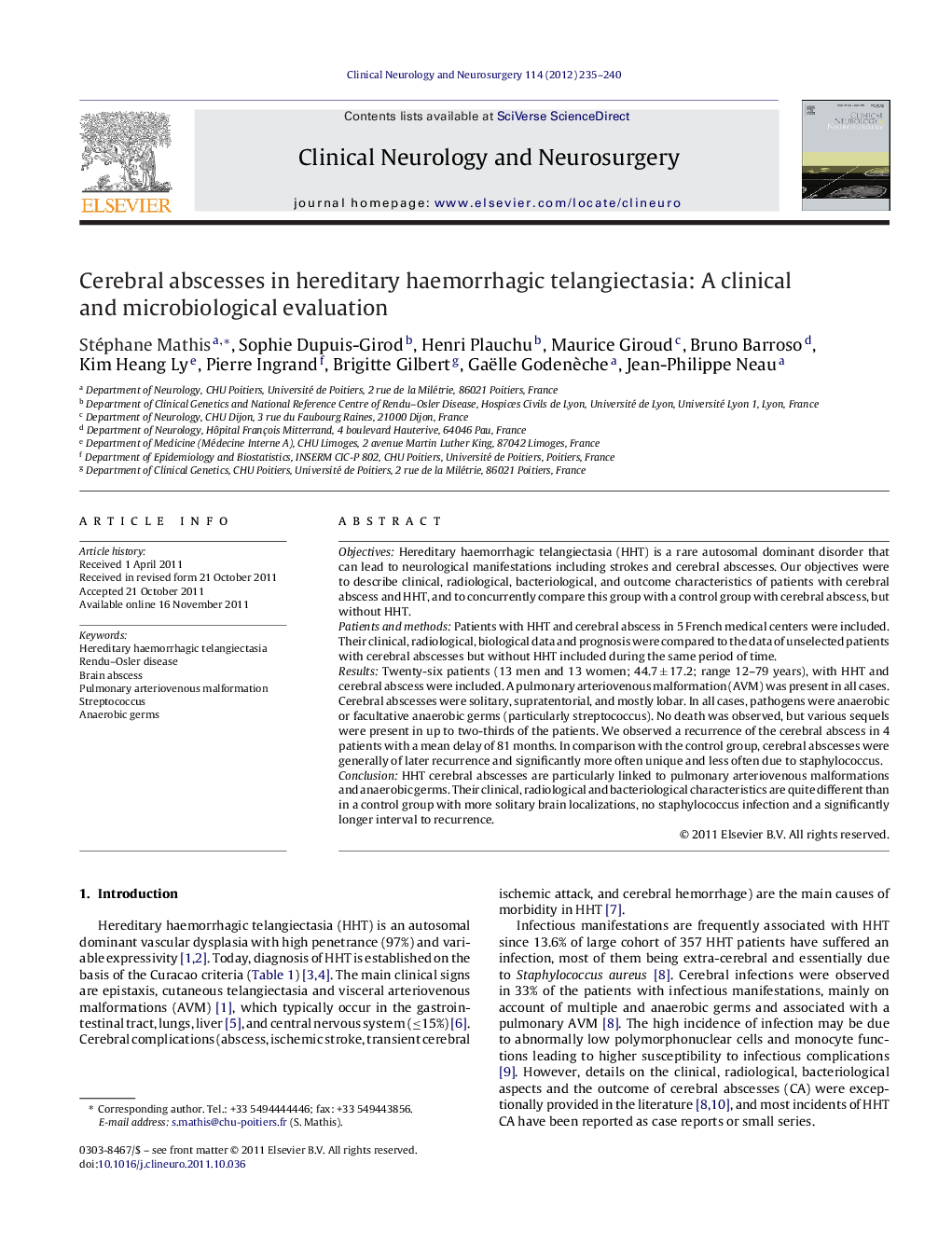| Article ID | Journal | Published Year | Pages | File Type |
|---|---|---|---|---|
| 6007183 | Clinical Neurology and Neurosurgery | 2012 | 6 Pages |
ObjectivesHereditary haemorrhagic telangiectasia (HHT) is a rare autosomal dominant disorder that can lead to neurological manifestations including strokes and cerebral abscesses. Our objectives were to describe clinical, radiological, bacteriological, and outcome characteristics of patients with cerebral abscess and HHT, and to concurrently compare this group with a control group with cerebral abscess, but without HHT.Patients and methodsPatients with HHT and cerebral abscess in 5 French medical centers were included. Their clinical, radiological, biological data and prognosis were compared to the data of unselected patients with cerebral abscesses but without HHT included during the same period of time.ResultsTwenty-six patients (13 men and 13 women; 44.7 ± 17.2; range 12-79 years), with HHT and cerebral abscess were included. A pulmonary arteriovenous malformation (AVM) was present in all cases. Cerebral abscesses were solitary, supratentorial, and mostly lobar. In all cases, pathogens were anaerobic or facultative anaerobic germs (particularly streptococcus). No death was observed, but various sequels were present in up to two-thirds of the patients. We observed a recurrence of the cerebral abscess in 4 patients with a mean delay of 81 months. In comparison with the control group, cerebral abscesses were generally of later recurrence and significantly more often unique and less often due to staphylococcus.ConclusionHHT cerebral abscesses are particularly linked to pulmonary arteriovenous malformations and anaerobic germs. Their clinical, radiological and bacteriological characteristics are quite different than in a control group with more solitary brain localizations, no staphylococcus infection and a significantly longer interval to recurrence.
